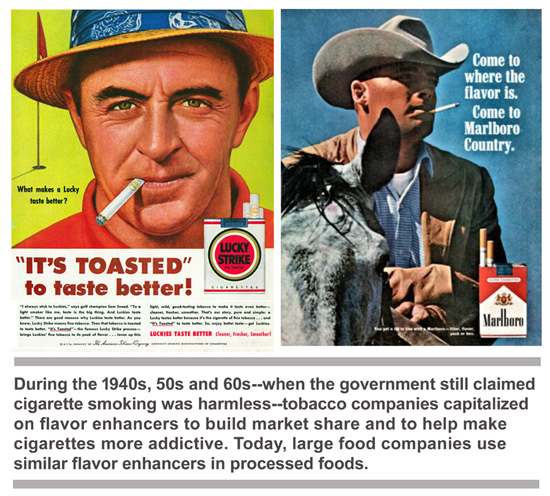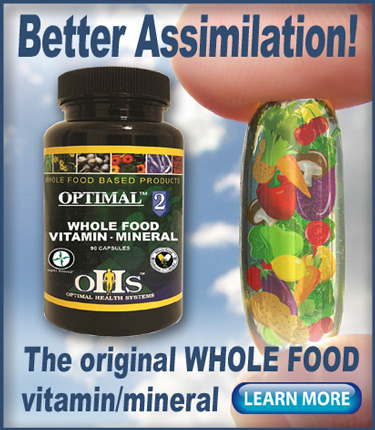If you’re having a difficult time kicking the junk food habit, you’re not alone. And it’s not an accident that so many people struggle with seemingly irresistible cravings: junk food is designed to be addictive.
According to a study published in the journal Addiction in September 2022, highly processed foods meet the same guidelines that were used to classify tobacco as an addictive substance.
Junk Food Addiction: A Crisis Rooted in Big Food Tactics
Researchers found that junk food “can trigger compulsive use, has psychoactive effects and is highly reinforcing.”
This is the same criteria used in a 1988 Surgeon General report that restoundingly established that tobacco is addictive.
Scientists also note that junk food consumers receive a dopamine release, similar to that caused by drug use. Moreover, in a similar fashion to drug use, the dopamine hit benefit is short-lived and the user is soon coming back for more.
Dr. Ashley Gearhardt, one of the researchers involved in the study, noted that their research also showed diets high in processed foods are causing just as many early deaths as tobacco use.
This amounts to more deaths than that caused by alcohol and opioids combined. Gearhardt also noted that processed foods are the number one cause of liver transplants in the United States.
When examining highly processed foods, the researchers found that additives contributed to amplifying the addictive nature of the food. Some additives are used as preservatives, or for food consistency and shape, but many others are used simply to make the taste more powerful.
When the additives are combined with fat and sugar, the addictiveness becomes even more powerful. The end result is a consumers standing in line for thier next junk food meal will be experiencing “mouth watering” sensations in anticipation of their next “fix.”
Big Food takes a que from the tobacco industry
The study notes in the 1960s and 70s additives were more commonly placed in tobacco products, which enhanced the “somatosensory appeal, taste and smell” of cigarettes.
While advertising in the first half of the 20th century helped the rates of cigarette smoking mushroom, the growth had reached a plateau, and was even declining in some sectors. The introduction of additives breathed new life into the marketing.
Today, additives in processed foods act the same way.
“We see that the amount of sugars and fats in these foods are amped up so high in processing that they far surpass anything our brain really evolved to handle,” Gearhardt states. “They hit our body so rapidly that they are as effective as something like nicotine in triggering our brain and its reward system.”
This explains why even people who recognize junk food is not good for them still cannot resist the temptation.
According to the reseachers, even people whose lives depend on cutting down—such as those with diabetes or heart disease—are unable to resist. It was a similar story for smokers when the addictive nature of tobacco was studied.
“We looked at those same exact benchmarks to say, ‘How did we get to a point where we knew tobacco wasn’t just a bad habit, it wasn’t just about willpower,’” Gearhardt said. “We found that these highly processed foods met every single benchmark that tobacco did to be labeled as an addictive substance.”
Defining addictive nature
Some experts disagree that highly processed foods can be compared to tobacco as an addictive agent; however, the researchers involved in the 2022 study noted they are able to provide evidence that highly processed foods meet the three criteria of an addictive substance as outlined by the 1988 Surgeon General’s Report on the addictive nature of tobacco products:
1) They trigger compulsive use
2) They have psychoactive effects
3) They are highly reinforcing
The researchers also noted that highly-processed foods are complex substances that cannot be simplified to a single chemical agent acting through a specific central mechanism. This is also true of industrial tobacco products, which contain thousands of chemicals in addition to nicotine.
Everyone knows there’s a problem—we just choose to ignore it
Though the researchers present new compelling evidence, the study isn’t the first to finger an intentional design in junk food.
In his 2014 book Salt Sugar Fat: How the Food Giants Hooked Us, Pulitzer prize-winning author Michael Moss introduces the reader to labs where scientists calculate the “bliss point” of sugary beverage. He also covers the marketing techniques taken straight from tobacco company playbooks, and he even interviews concerned insiders who make startling confessions.
The Washington Post’s review of the book summarizes it this way: “If you had any doubt as to the food industry’s complicity in our obesity epidemic, it will evaporate when you read this book.”
Even the multi-national corporations that dominate the market, commonly referred to as “Big Food,” have been aware of the problem for decades. In a 1999 meeting in Minneapolis that included 11 leaders of America’s biggest food companies, the direct comparison between Big Food and Big Tobacco was made.
The first speaker presented a quote from Yale University professor of psychology and public health, Kelly Brownell:
“As a culture, we’ve become upset by the tobacco companies advertising to children, but we sit idly by while the food companies do the very same thing. And we could make a claim that the toll taken on the public health by a poor diet rivals that taken by tobacco.”
The speaker then presented the plan he and others had devised to address the obesity problem.
The company leaders attending the presentation included the presidents and CEOs of General Mills, Procter & Gamble, Coca-Cola, Pillsbury, Kraft, Nabisco and Mars. And the fact that the meeting even took place demonstrates that Big Food is well aware that there is a Big Problem.
Nevertheless, the presentation appears to have fallen on deaf ears. America’s love affair with processed foods has only grown worse during the subsequent 24 years.
Junk food consumption increases—obesity increases
According to Centers for Disease Control and Prevention data, in the year 2000 the obesity rate was 30.5% of all adults. In the year 2020 the obesity rate had grown to 42%.
In addition, fewer than one in ten children or adults eat the recommended daily amount of vegetables; and millions of Americans depend entirely on convenience stores to buy their groceries.
Just as the industrialization and mass marketing of cigarettes caused the use of tobacco of skyrocket, a proliferation of highly processed foods in the past few decades means they’re easily found on store shelves today, not just at fast food restaurants. Moreover, processed foods are relatively cheap—at least compared to healthier foods—making the addiction problem even more alluring.
Final thoughts
Each consumers is ultimately responsible for his or her own health. It’s easy to blame “evil corporations” for poor health and poor decisions. But it is also true that there are powerful and monied interests who are stacking the odds against you. Realizing that Big Food is using subtle tactics to keep you addicted to unhealthy foods will help you make better choices moving forward.
– – –
Sources: Addiction (Wiley.com), Harvard Health, CDC.gov.


